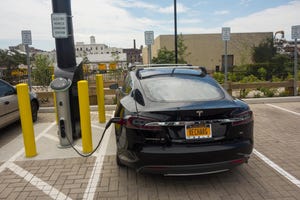Will Elon Musk blow up telecom?
Billionaire entrepreneur Elon Musk wants X to replace phone numbers. While that might be an empty threat to traditional telecom companies, it highlights a marketplace that's becoming increasingly complex.

Elon Musk – the world's richest person – said he's going to ditch his phone number and move all his communications over to X, the social media app he owns.
"In a few months, I will discontinue my phone number and only use X for texts and audio/video calls," Musk wrote on – where else? – X.
The move underscores Musk's broad interest in turning X (previously called Twitter) into a "super app" like WeChat in China. Such apps collect a wide array of services and capabilities like banking, messaging, social media and shopping under one icon and login.
The move also puts Musk on a collision course with mobile network operators like Verizon and AT&T, companies that sell phones and phone numbers. X launched calling services late last year for $8 per month.
But should mobile network operators be worried? No, of course not. At least, not yet.
One number to rule them all
As Gizmodo points out, phone numbers still play an important role in everyday life. Indeed, they also can play an important role in the security services supporting Musk's X. Paying customers of the social media service can activate two-factor authentication on X using their phone number (though they can also use authentication apps or security keys, as can users who do not pay for the service).
So there's that.
But phone numbers are also a basic part of everyday life, considering everybody has one. Meanwhile, the calling and messaging services on X are only available to users who have that app. The number of people who regularly use X is either falling or rising, depending on who you ask and how you count.
Moreover, X isn't all that useful without an Internet connection. AT&T, Verizon, and T-Mobile supply those connections just about everywhere, thanks to the billions invested in their nationwide mobile networks.
So there's that too.
And did I mention regulated telecom services like 911?
Alternatives
But X isn't Musk's only gambit. He's also leading companies that build robots, operate supercomputers, sell electric cars, install solar arrays, develop AI services, put computers into brains, dig holes and launch rockets into space. On that last one, a subsidiary of SpaceX (Starlink) operates more than 5,000 satellites that currently beam speedy Internet connections around the globe.
"Starlink is not some huge threat to telcos. I want to be super clear: it is not," Musk said in 2020.
Here in 2024, Starlink is launching satellites that can connect directly to smartphone users on the ground. But mobile network operators are still important in this "direct-to-cell" scenario: They provide the spectrum, customers, billing and back-office infrastructure necessary for Starlink's satellites to connect to those smartphone customers.
But what if there was an alternative? A rival group of satellite operators is banning together for something that looks like just that.
Enter the MSSA
Viasat, Terrestar, Ligado Networks, Omnispace and Yahsat on Friday announced the Mobile Satellite Services Association (MSSA). It essentially brings together a number of satellite companies that have been playing in the direct to device (D2D) market. D2D services, like those from SpaceX, connect smartphones to satellites.
MSSA is touting up to 100 MHz of L- and S-band spectrum that can be used by both mobile network operators "and over-the-top (OTT) Internet services." Musk's X would presumably qualify as one of those OTT companies.
To be clear, X and other social media and Internet companies are not the initial focus of MSSA. Speaking on Viasat's recent earnings call, CEO Mark Dankberg said device makers are looking at installing chips into their devices to support Viasat's D2D services. He said they could bring those gadgets to market "probably later this year."
Apple, of course, is the pioneer here, having inked an agreement with satellite operator Globalstar to offer iPhone emergency messaging services for free for an undetermined amount of time. Other such offerings remain in flux, considering satellite operator Iridium recently backtracked on a similar strategy, only to replace it with one that appears to be more friendly to terrestrial mobile network operators.
Supplements and replacements
No satellite company is talking about mobile smartphone connections that would directly rival terrestrial cellular network operators. That's because satellite networks' current capabilities generally pale compared to terrestrial cellular networks.
In general, the wireless networks that work best – whether Wi-Fi, 5G or satellite – are the ones that operate across large swathes of spectrum, and that put users closest to transmission sites. For example, adding C-band spectrum to Verizon's network supercharged the operator's 5G connections. Similarly, Starlink leapfrogged the speeds provided by traditional satellite operators by deploying satellites in low Earth orbit, closer to users.
Further, wireless connections are often shared among dozens, hundreds or millions of users. Meaning that Verizon's 5G network could probably provide speeds similar to those of fiber or cable operators – if it reserved those speeds for just one or two customers per cell site. But that's not economically feasible.
So what does all this have to do with Musk ditching his phone number? Not much. Musk is trying to drum up interest in his loss-making social media spectacle by leveraging his status as a business celebrity. That's not going to have much of an effect on big telecom providers like AT&T and Verizon.
But the threats against telecom's traditional businesses are increasing. Those threats are coming from technologies including eSIM, decentralized wireless, cable MVNOs and, yes, satellites.
Operators essentially gave up their text messaging revenues a decade ago amid the rise of "over the top" services like iMessage and WhatsApp. What will they give up next?
About the Author(s)
You May Also Like












